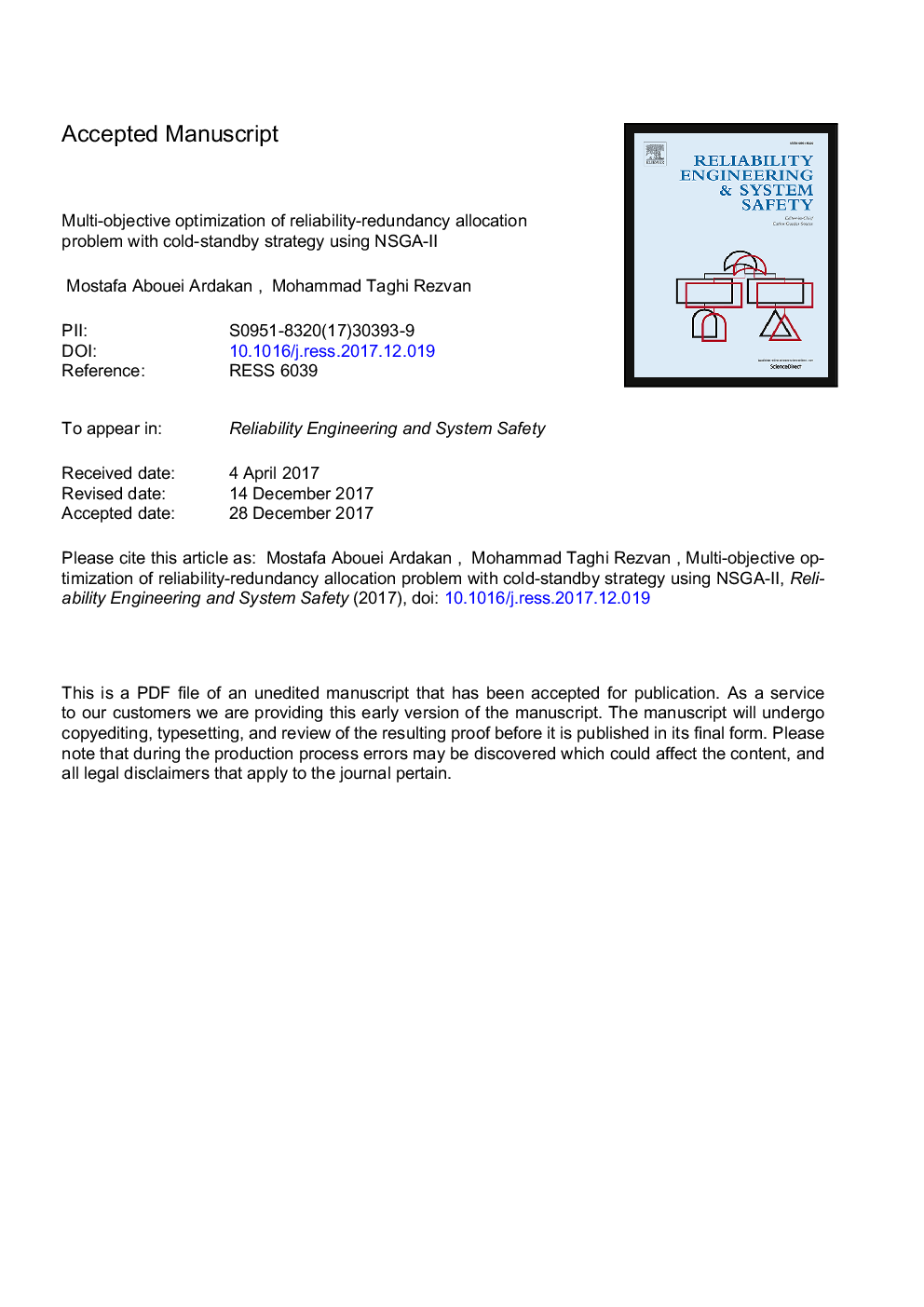| Article ID | Journal | Published Year | Pages | File Type |
|---|---|---|---|---|
| 7195266 | Reliability Engineering & System Safety | 2018 | 32 Pages |
Abstract
The reliability-redundancy allocation problem (RRAP) involves the selection of components reliability and redundancy levels, with the aim of maximizing system reliability. Generally, RRAPs are formulated with the assumption of active redundancy strategy. In this paper, the problem is formulated by considering a cold-standby strategy. In most practical cases, complicated decision-making problems are encountered due to the presence of several conflicting objectives such as maximizing system reliability and simultaneously minimizing the total cost, weight or volume of the systems. Therefore, it is essential to consider these conflicting criteria as the main objectives of the optimization problem. Hence, in this paper, a bi-objective RRAP is developed. The proposed mathematical model is developed for three benchmark problems and solved by using a multi-objective evolutionary algorithm (NSGA-II). In order to calculate the exact reliability values for the problems, a recently introduced Markov-based approach is used. The results indicate that, in comparison with recent studies, the proposed NSGA-II shows superior performance and leads to better results in all benchmark problems. In other words, for each problem, a variety of structures are presented which outperform the best active structure and at least one structure is obtained that outperforms the best standby one in the literature.
Related Topics
Physical Sciences and Engineering
Engineering
Mechanical Engineering
Authors
Mostafa Abouei Ardakan, Mohammad Taghi Rezvan,
